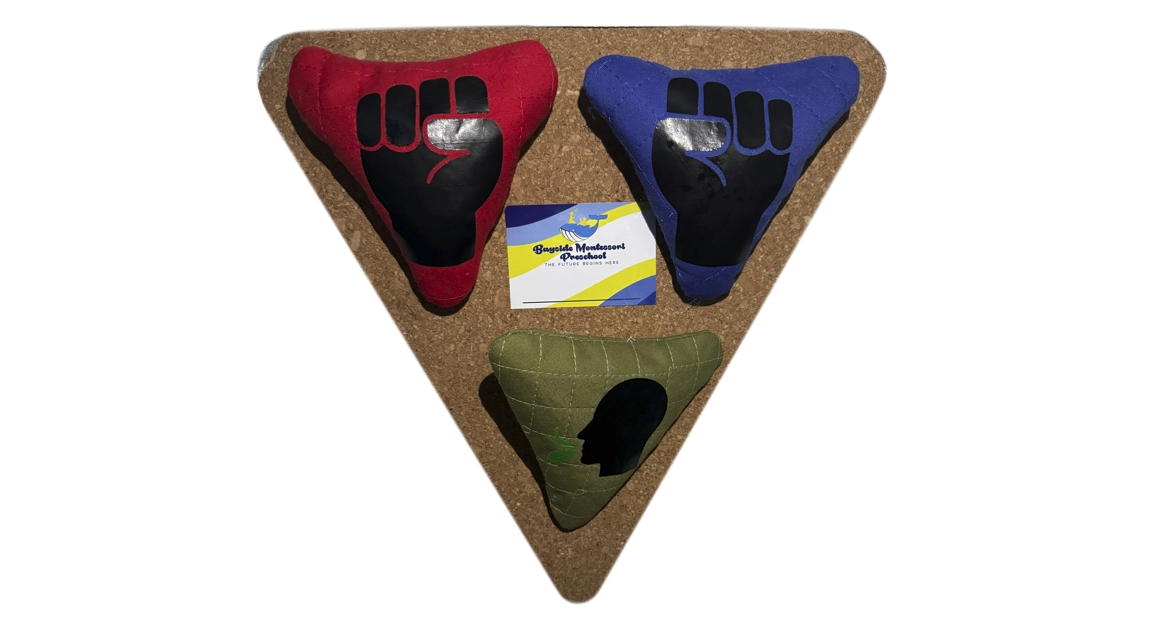Maria Montessori once wrote that “establishing lasting peace is the work of education,” and that a child must first find inner order before intellectual work can flourish. Without emotional safety and self-regulation, studying is not only ineffective — it is nearly impossible. Academic excellence must stand on a foundation of peace within the child. I came to understand how true this is when war entered the lives of children I know and love.
When the war in Ukraine began, I witnessed not only the physical destruction of homes but also the invisible wounds carried by children. My own daughter — who has never even been to Ukraine — began waking up at night, trembling and crying, as if she could feel the war through us: through her mother jolting awake from nightmares, through the phone calls about friends and relatives lost in Ukraine, through the grief that settled in our home. Friends in Ukraine told me that their children — especially those who had fled to safety or continued to live under sirens — experienced the same symptoms of fear, sleeplessness, and panic. As an educator and father, I recognized that fear had followed these children into their classrooms, where it hindered learning and self-regulation.
Before the war, I had already spent years helping children learn to manage strong emotions. I tried every established method I knew — naming the feeling, talking it through, offering breathing exercises, and providing quiet space. Yet many children still cried, hit, bit, screamed, or collapsed in despair. I realized that words and gentle breathing were not enough; the emotional energy needed a safe channel for release. Drawing on both my background as a Montessori educator and my experience as a Master of Sports in Boxing, I began to design a tool that would allow children to discharge tension physically while remaining regulated. The result was the Triangle Breathing Tool — a simple, sensorial material that invites the child to strike a soft bag with a closed fist or give it a firm “high five” (a controlled, purposeful movement rather than an act of aggression) and then inhale slowly over a cotton bag filled with lavender. In Montessori terms, it gives the child a concrete, repeatable action that grounds the body and restores internal order through movement, breathing, and sensory integration.

Montessori Values at the Core
The Triangle Breathing Tool is rooted in Montessori values, embodying the four cornerstones of the pedagogy. It supports independence by allowing children to choose when to visit the triangle breathing corner, giving them agency over their emotional regulation rather than relying on an adult to intervene. It reflects the prepared environment: the space is child-sized, uncluttered, and accessible, with the triangle of three soft, color-coded bags placed where children can reach it without assistance. It is also a sensorial experience — the red and blue bags, filled with dry beans, invite children to exhale and release frustration through touch, sound, and purposeful movement, while the green bag, filled with lavender
from our school garden, supports inhalation; its natural aroma calms the nervous system and anchors the child in the present moment. Finally, it is an act of peace education: rather than hitting, biting, or yelling, children learn to transform internal chaos into calm and return to the community regulated and ready to learn, embodying Montessori’s belief that peace must first take root within the child.
A Structured Release of Emotion
In Montessori classrooms, abstract concepts are always introduced first through concrete materials—the pink tower, the sandpaper letters, the golden beads. The triangle breathing bags work in the same way: they provide a materialized version of emotional regulation. Children learn through touch, repetition, and pattern.
The breathing sequence—exhale on red, exhale on blue, inhale on green—moves from left to right, top to bottom, mirroring the directionality of reading and writing. Over time, children internalize this rhythm. Eventually, they no longer need the bags; they can trace a triangle in the air, on the table, or simply in their imagination to restore calm.

Stories of Impact
The first group of children to use the Triangle Breathing Tool were refugees from Ukraine and Lebanon. Their parents noticed visible changes within weeks: calmer behavior, better sleep, and fewer emotional outbursts. Teachers observed improved focus and learning readiness.
At a Ukrainian orphanage supported by our school’s donations, the director reported similar results—less anxiety, fewer panic attacks, and better academic engagement among the children. In my own classroom, one child who had struggled with biting peers learned to channel his frustration through the breathing triangle instead. Over several weeks, incidents decreased dramatically, and his confidence and concentration grew.
From Material to Mastery
Just as Montessori materials guide children from concrete to abstract understanding, the Triangle Breathing Tool helps children move from external aids to internalized regulation. What begins as a sensory experience becomes an inner resource for peace.
Through color, texture, and breathing, children learn to navigate their emotions independently—an essential life skill, especially in times of global uncertainty. The Triangle Breathing Tool stands as a testament to how Montessori principles can be reimagined to address the emotional needs of a new generation of children living through trauma.




